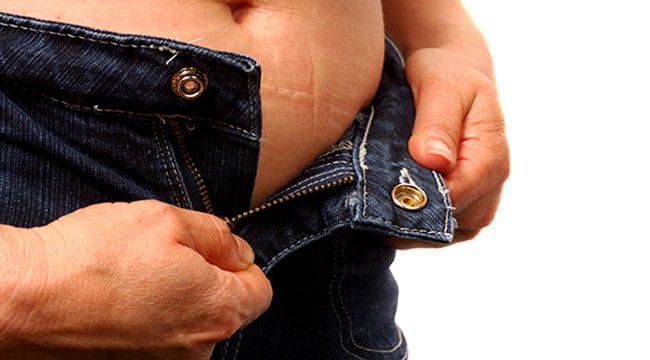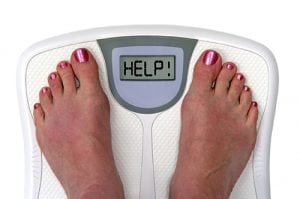
Find out how gastric sleeve can help you to make changes that last for the rest of your life.
Gastric sleeve surgery involves removing a part of your stomach and turning the remainder into a narrow tube about the size of a banana. The smaller tube-shaped stomach makes you feel fuller faster and reduces your feelings of hunger.
- If you are considering the gastric sleeve surgery, you must be willing to change your dietary and fitness habits for the rest of your lifetime
- Committing to such changes will help you to achieve the best possible results from your surgery
Qualifying for Gastric Sleeve Surgery
Surgeons consider several factors when deciding if the gastric sleeve surgery is right for you. To have the gastric sleeve surgery, you must be at least 14 years old and at your adult height. You must have at least 100 pounds of extra weight to lose. You should be healthy enough to have general anesthesia. You will need to commit to working with a nutritionist and developing an exercise plan. If you do not drive, you will need to have someone to help you with getting to your appointments and ensuring that you are able to purchase healthy food. Your surgeon may have you go through some medical tests to check for issues such as anemia. You will also have your heart, lungs and gallbladder checked. Most patients must also participate in counseling to make sure that they are ready for the weight loss and the lifestyle changes that the surgery requires.
Preparing for Surgery
A few months before your surgery, you will start to make healthy diet changes. You will have to eat meals in the same portion sizes as your smaller stomach will accommodate after the surgery. Your doctor may also ask you to start a simple exercise program, such as walking or swimming. If you smoke, you may be asked to quit so that your healing and recovery time will be as quick as possible.
How the Gastric Sleeve Surgery Works
 Gastric sleeve surgery is a permanent decrease in the size of your stomach. During your surgery, you will be under anesthesia. While you are sleeping, the surgeon removes 75 to 85 percent of your stomach. What is left is a smaller, banana shaped organ called the gastric sleeve. This surgery is done laparoscopically with two to five incisions in your abdomen. The doctor will stitch the incisions closed and you will be awakened slowly. Your hospital stay will be a few days, and then you can go home. You may be able to return to work about six weeks after surgery.
Gastric sleeve surgery is a permanent decrease in the size of your stomach. During your surgery, you will be under anesthesia. While you are sleeping, the surgeon removes 75 to 85 percent of your stomach. What is left is a smaller, banana shaped organ called the gastric sleeve. This surgery is done laparoscopically with two to five incisions in your abdomen. The doctor will stitch the incisions closed and you will be awakened slowly. Your hospital stay will be a few days, and then you can go home. You may be able to return to work about six weeks after surgery.
Life After Gastric Sleeve Surgery
Your diet plan will be one of the biggest changes after surgery. For a few weeks, you will have protein drinks. For a week or two after that, you will transition to pureed foods. About one month after surgery, you will eat soft foods, and by six weeks after surgery, you will be back to your regular foods but in much smaller portions. You may need to take some vitamin supplements to make sure that your body gets the nutrition it needs. Your new diet will need to focus on healthy foods such as lean protein, fruits and vegetables. Regular exercise will help you to lose more weight and maintain your weight once you reach your goal. In the first few months after surgery, you could lose 50 pounds or more, although results do vary. After that, your rate of weight loss will slow to a few pounds per month. You will have regular checkups to monitor your weight loss progress.
Benefits of Gastric Sleeve Surgery
 Once the procedure is over, it is as if the second part of your life begins. You will have to lead a new, healthy lifestyle. Your body will handle food in a completely different way. You may need to eat more slowly and savor each bite. This helps you to realize when your stomach is full so that you do not overeat. If you formerly went out for fast food or drank a lot of soda, you will need to start some new, healthier habits. You may be able to learn how to cook in new ways that are healthier. Getting used to your body’s new normal will take some time, but you might find that you have less joint pain, that you can go for longer walks and that your clothes fit better. If you had a condition such as asthma, arthritis or type 2 diabetes, you may even notice that you experience fewer flare-ups and experience overall improvement, although results do vary.
Once the procedure is over, it is as if the second part of your life begins. You will have to lead a new, healthy lifestyle. Your body will handle food in a completely different way. You may need to eat more slowly and savor each bite. This helps you to realize when your stomach is full so that you do not overeat. If you formerly went out for fast food or drank a lot of soda, you will need to start some new, healthier habits. You may be able to learn how to cook in new ways that are healthier. Getting used to your body’s new normal will take some time, but you might find that you have less joint pain, that you can go for longer walks and that your clothes fit better. If you had a condition such as asthma, arthritis or type 2 diabetes, you may even notice that you experience fewer flare-ups and experience overall improvement, although results do vary.

